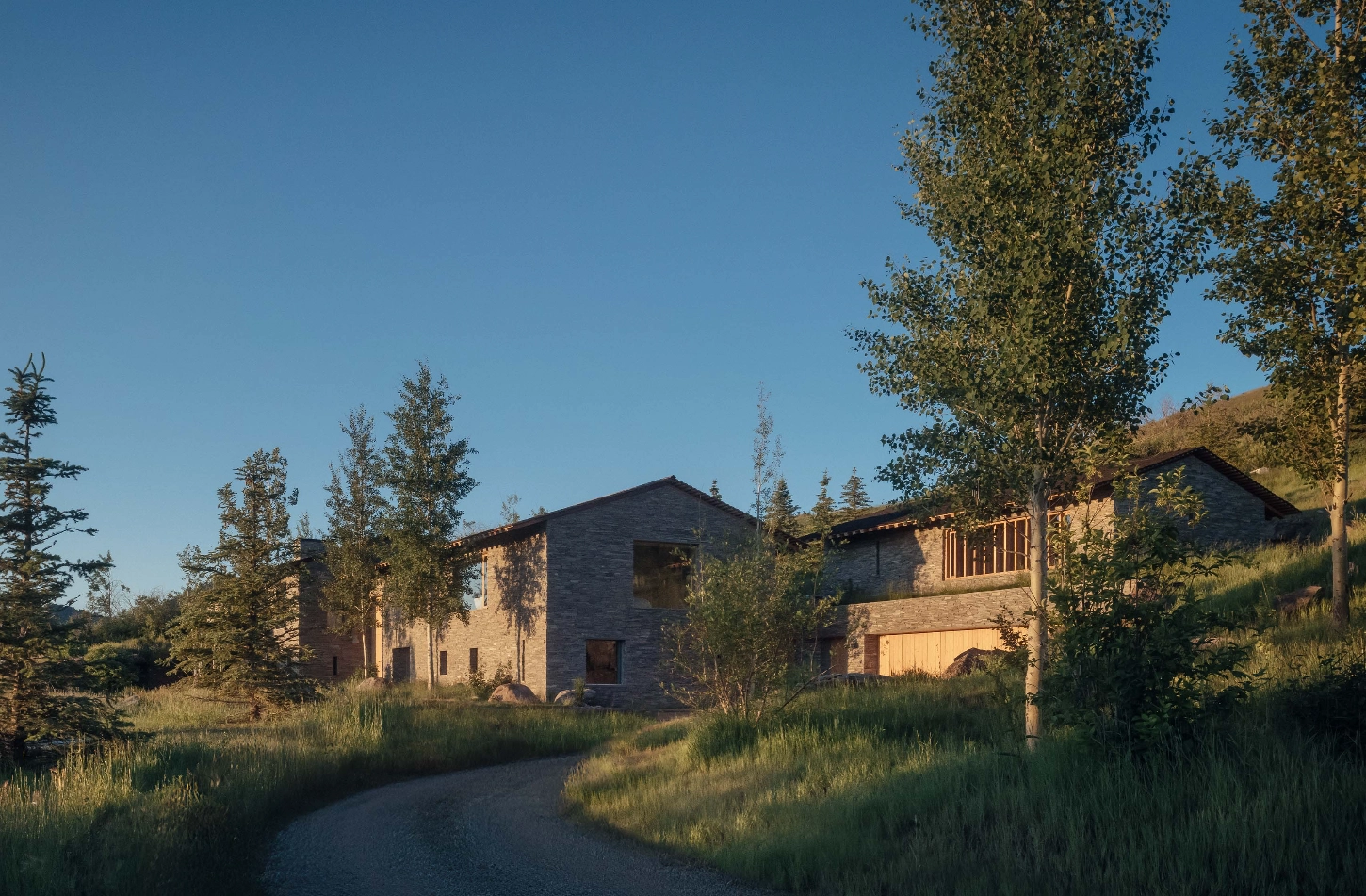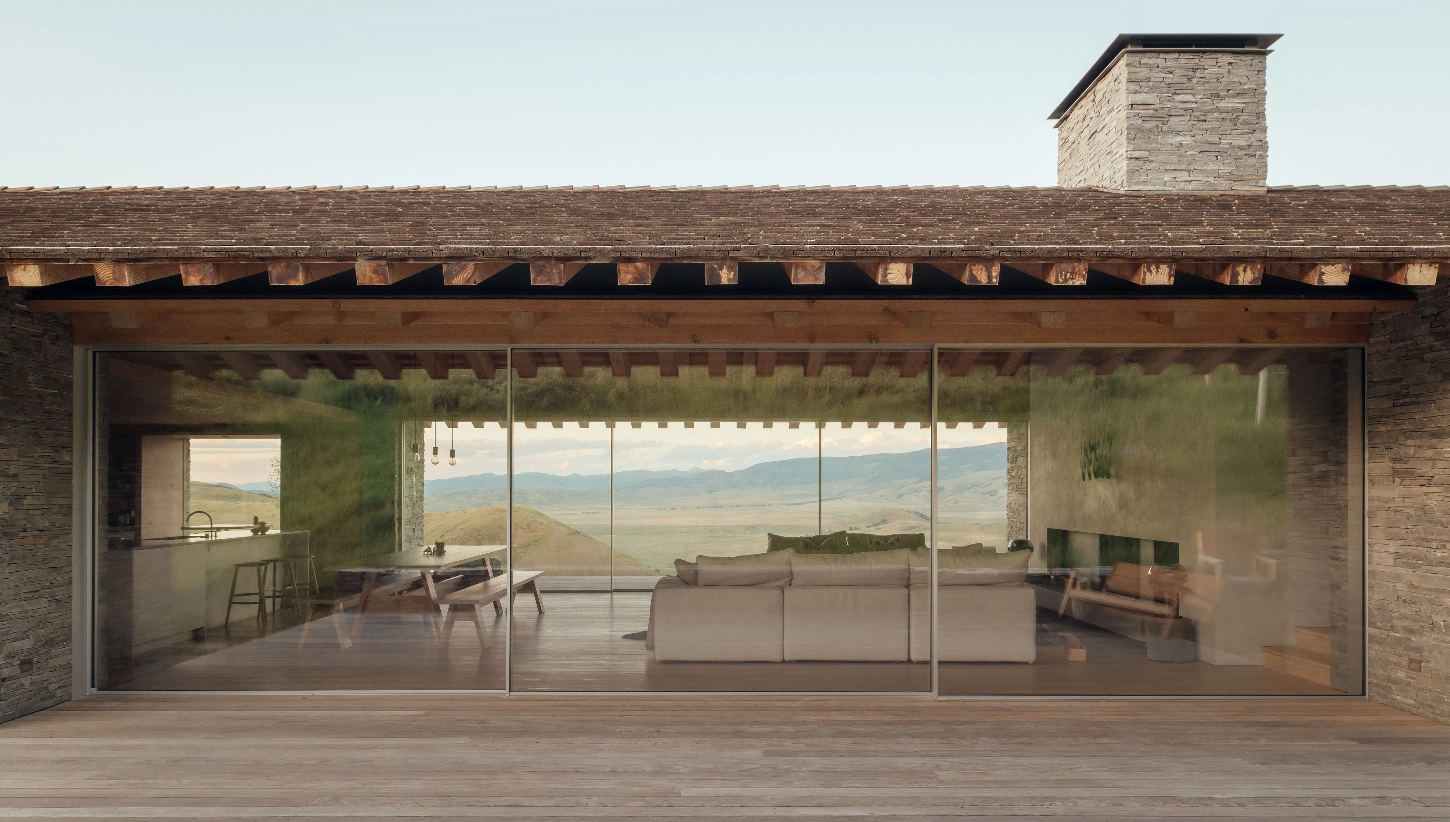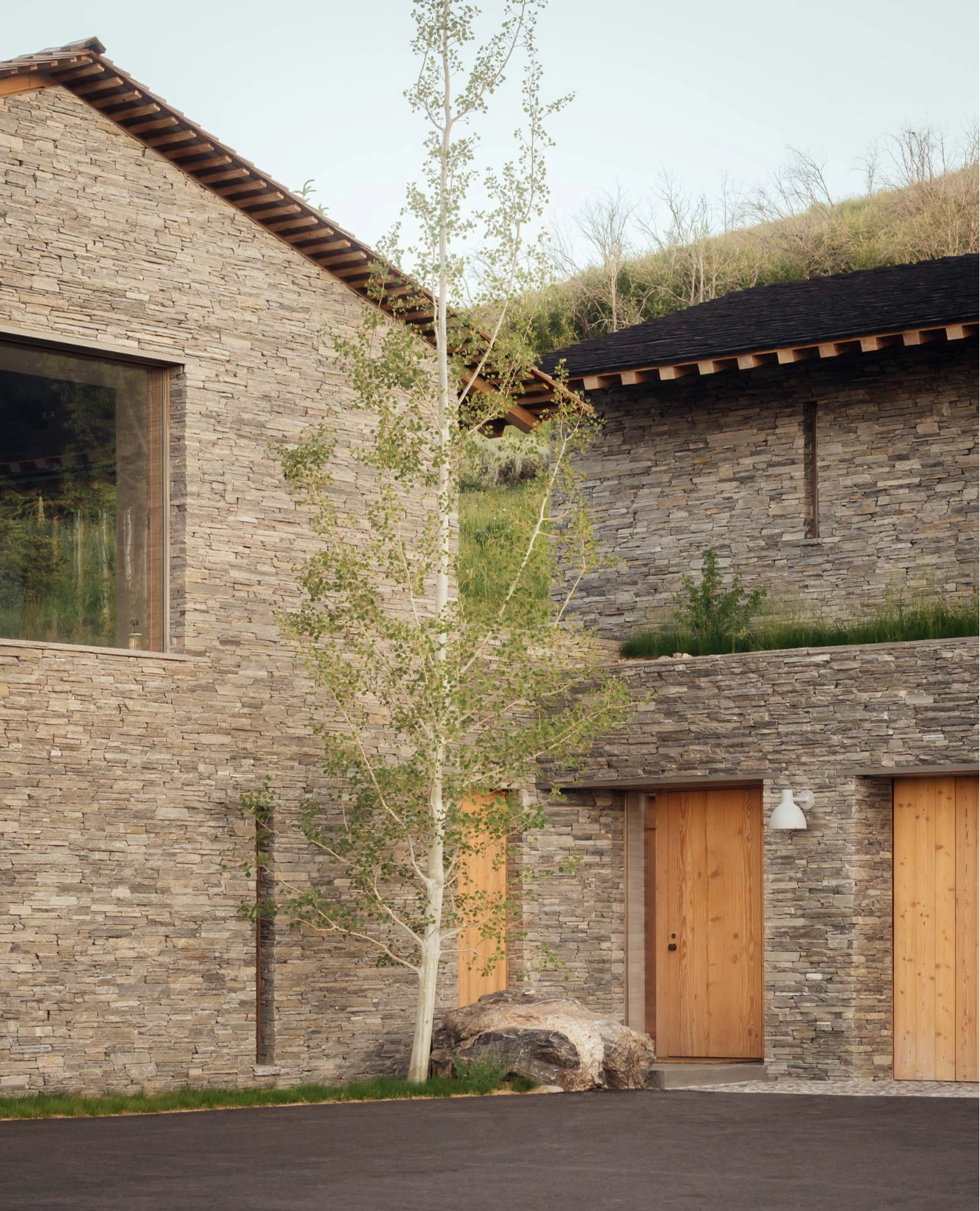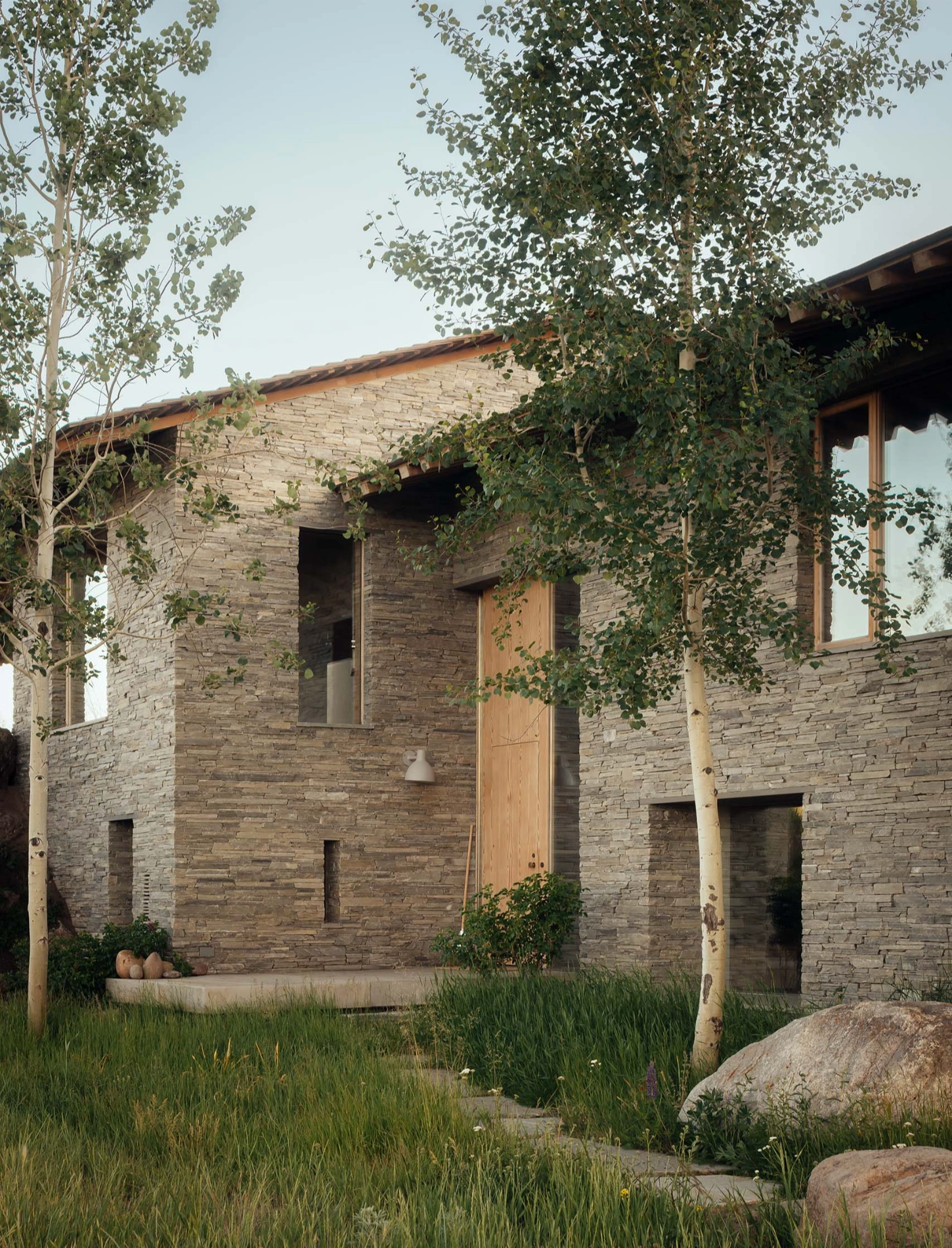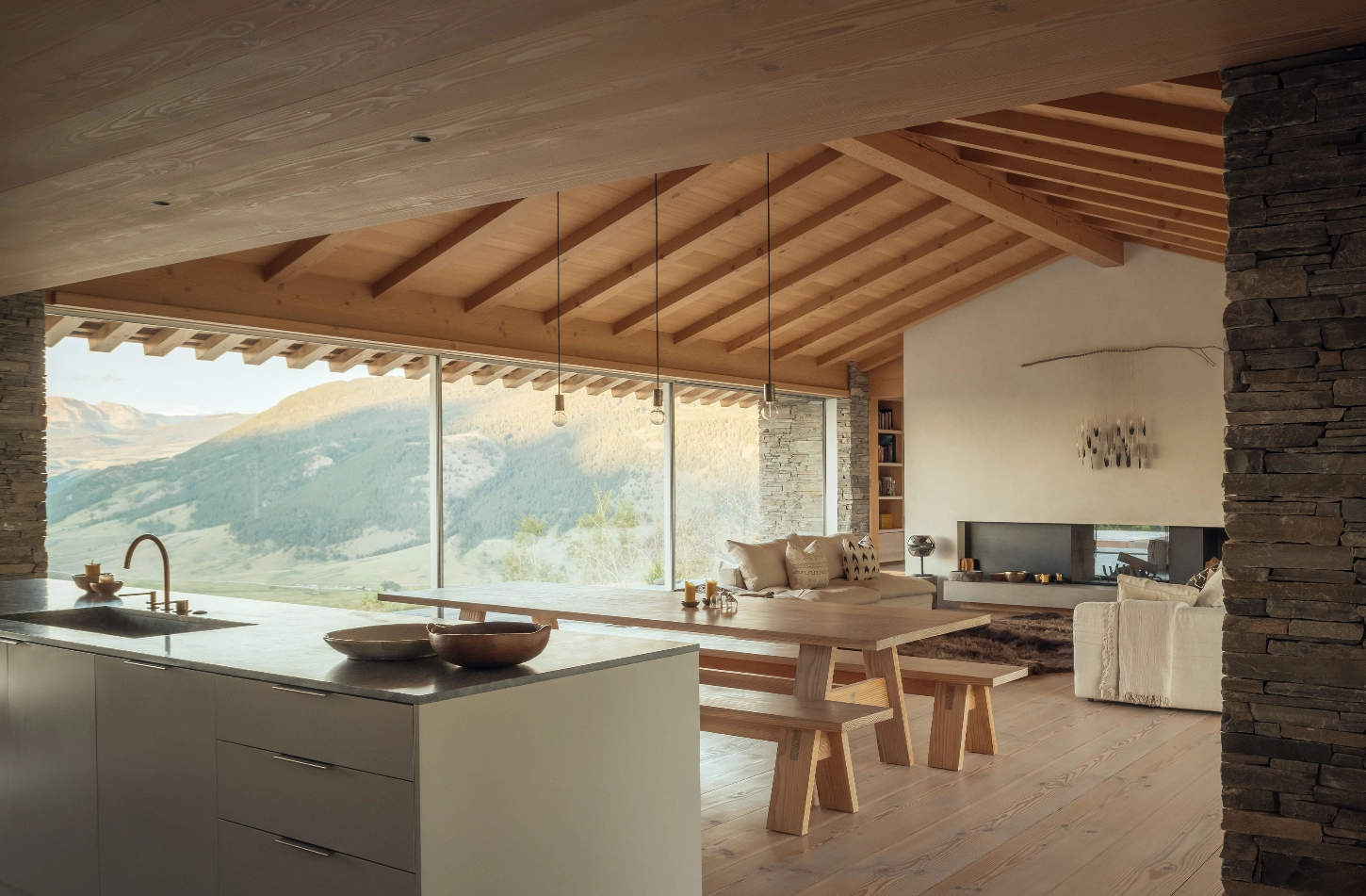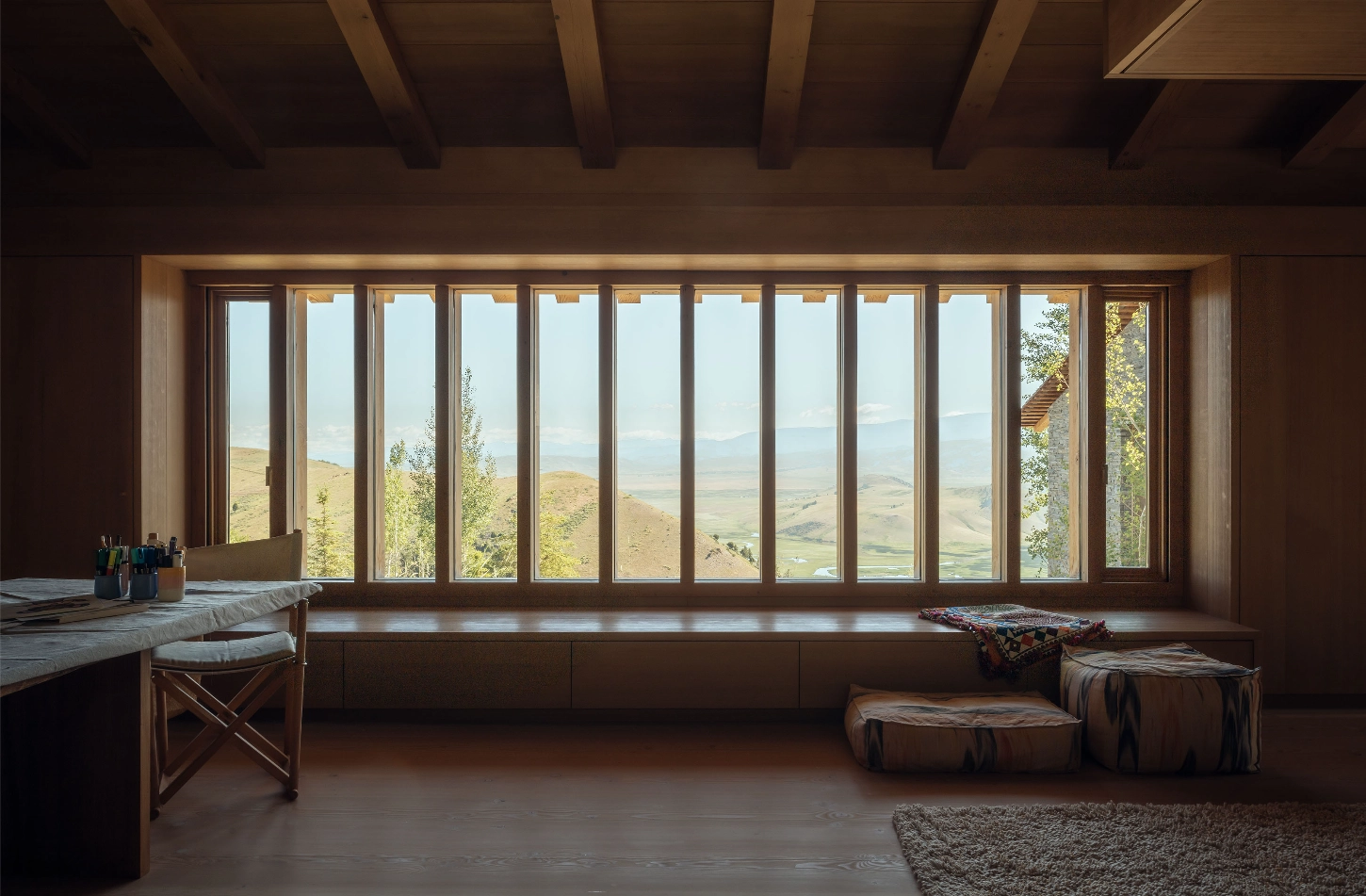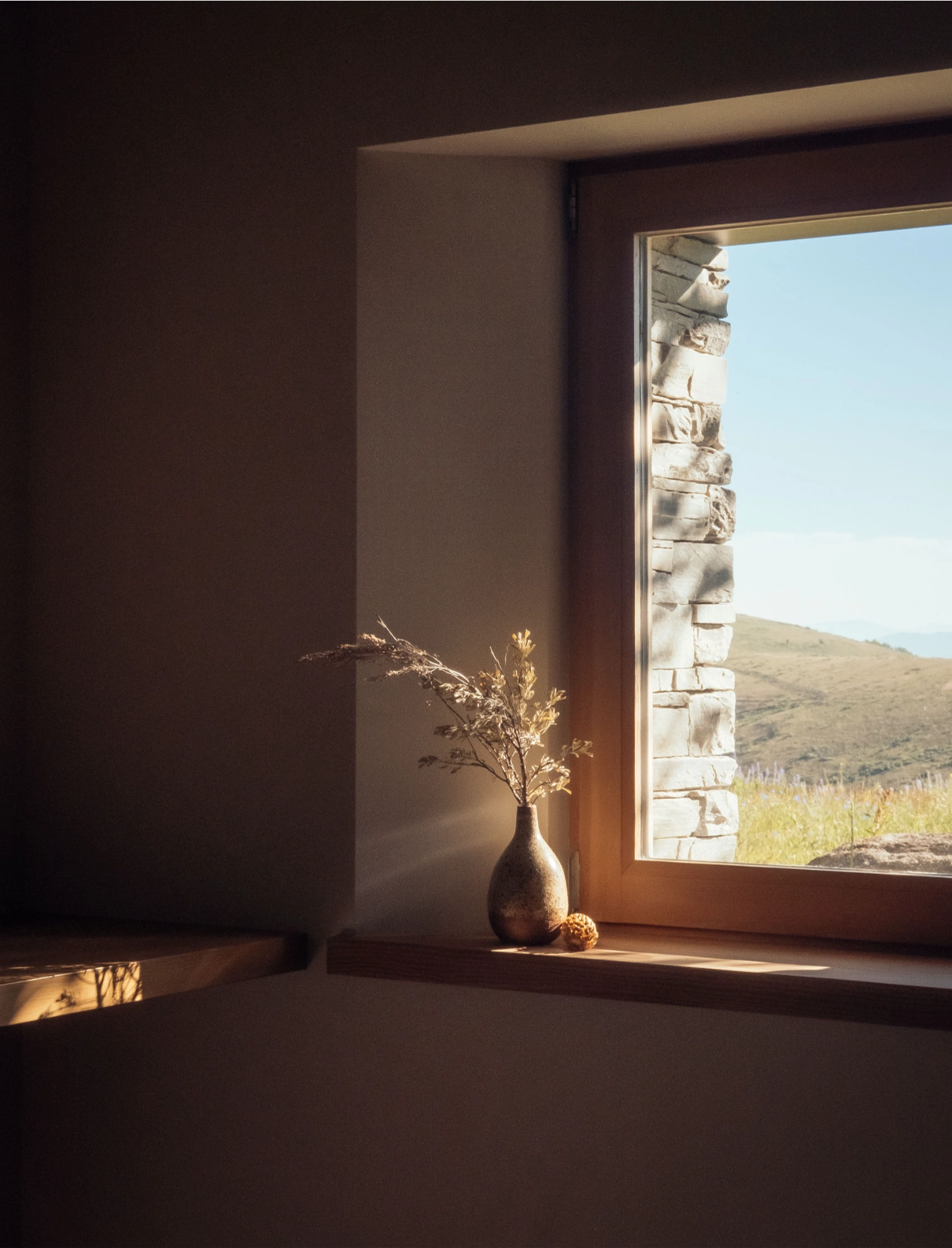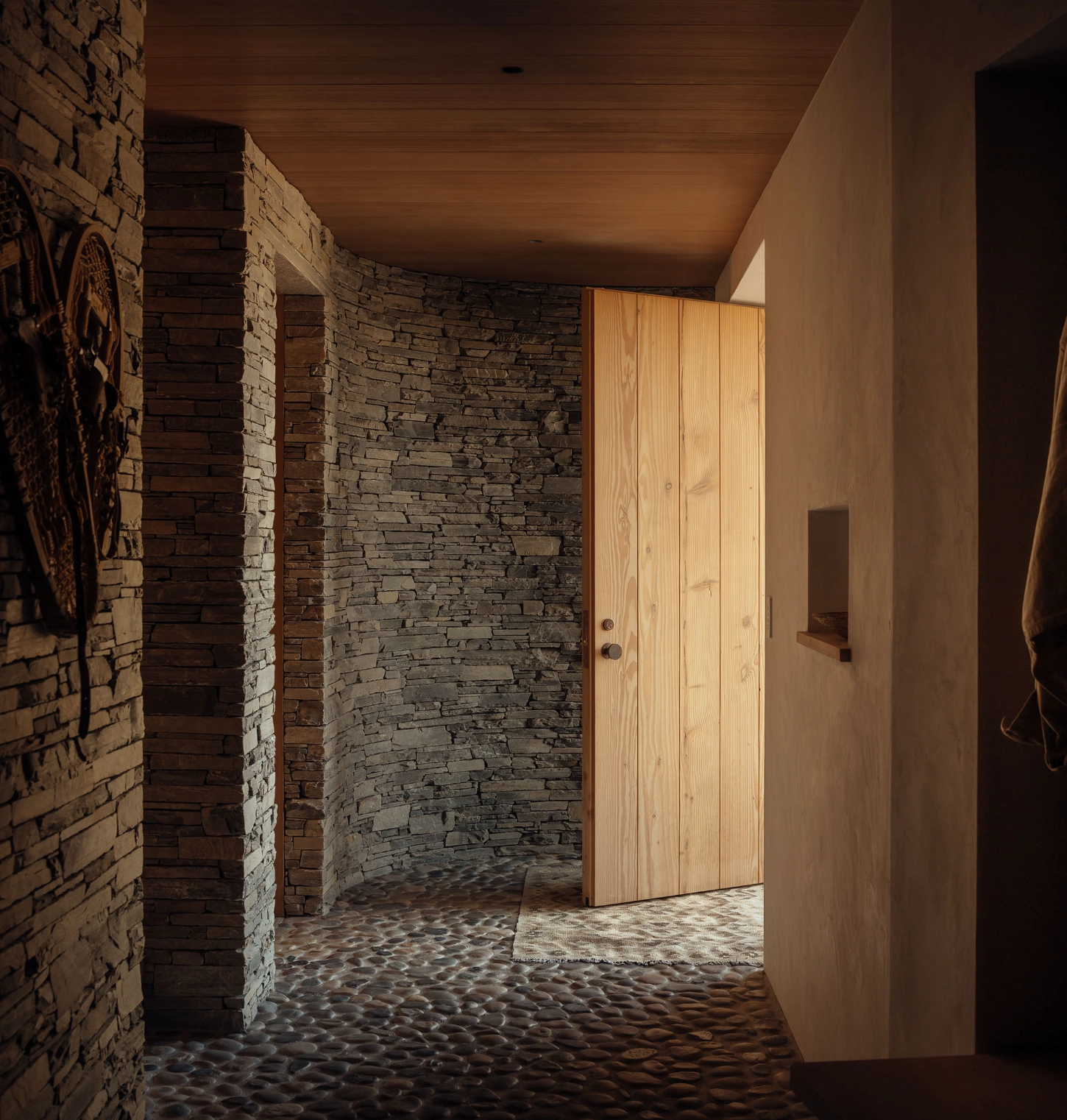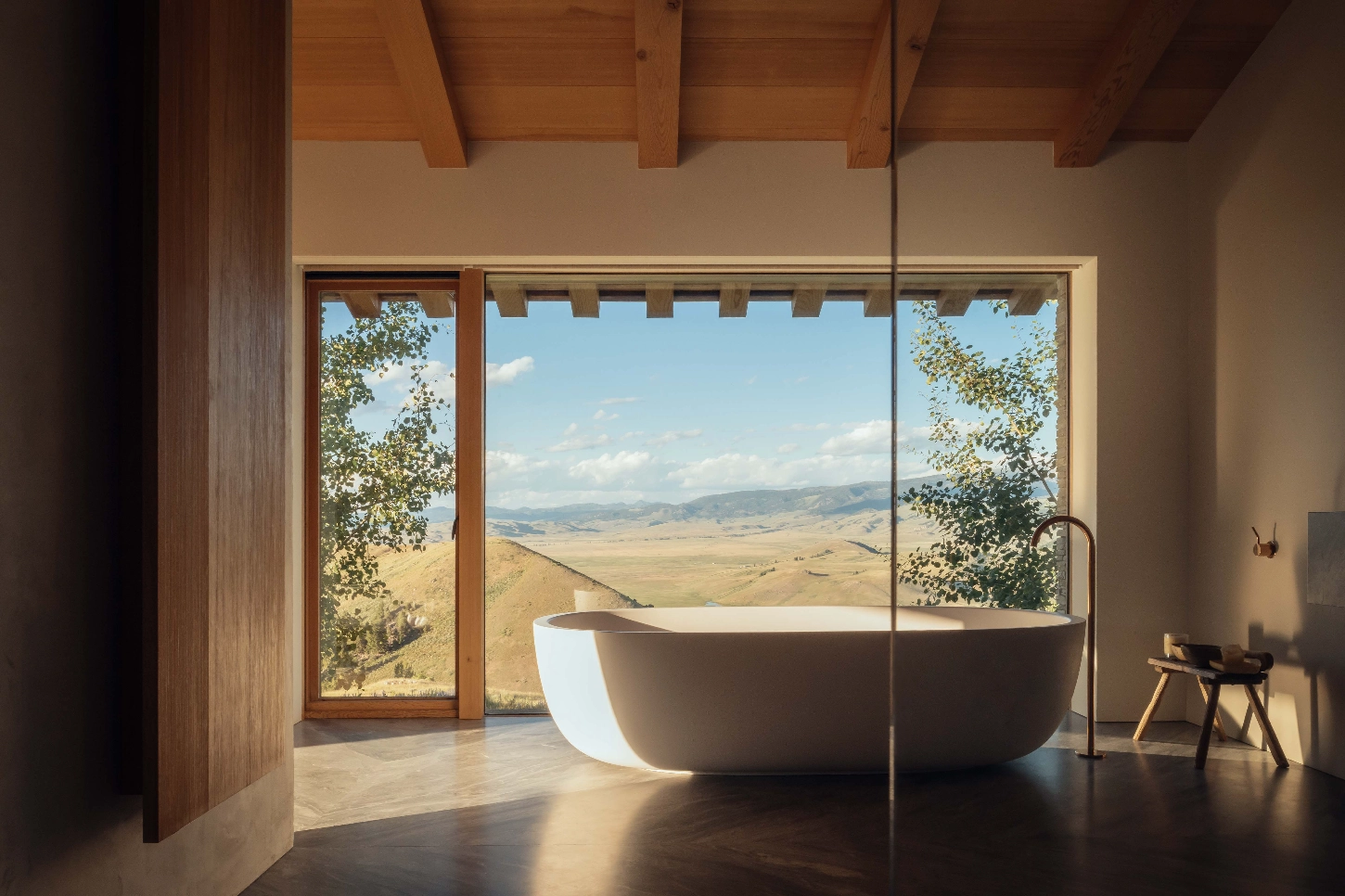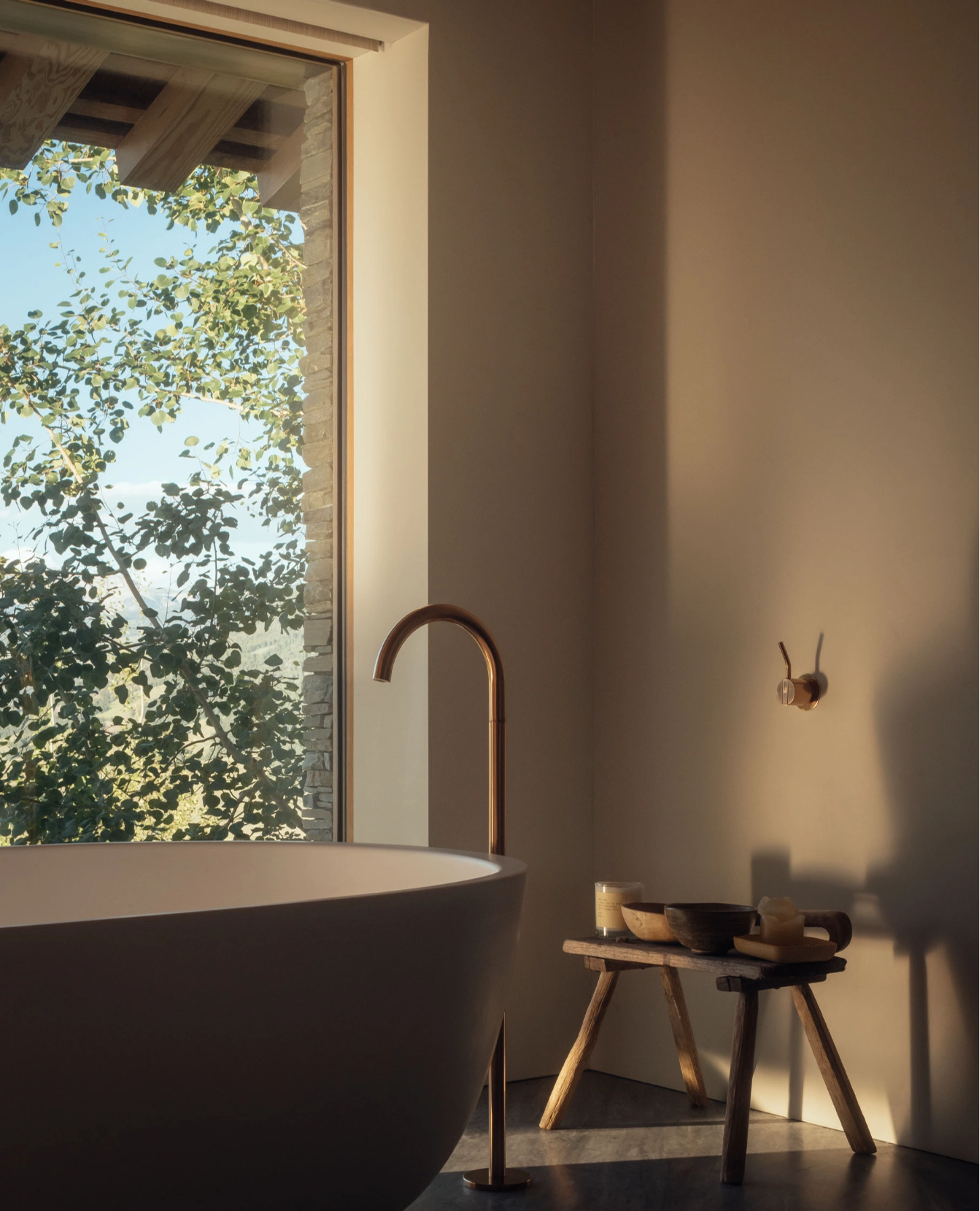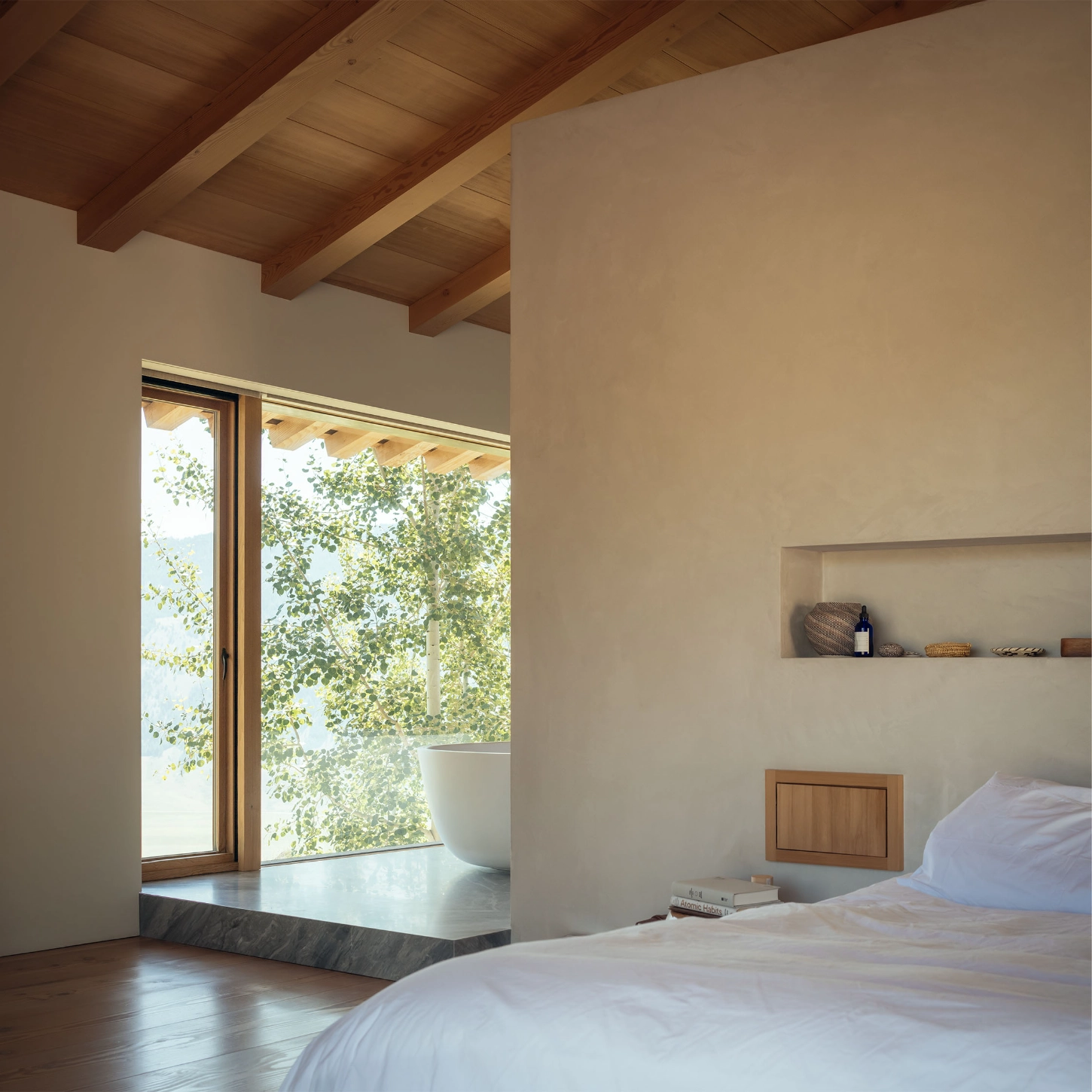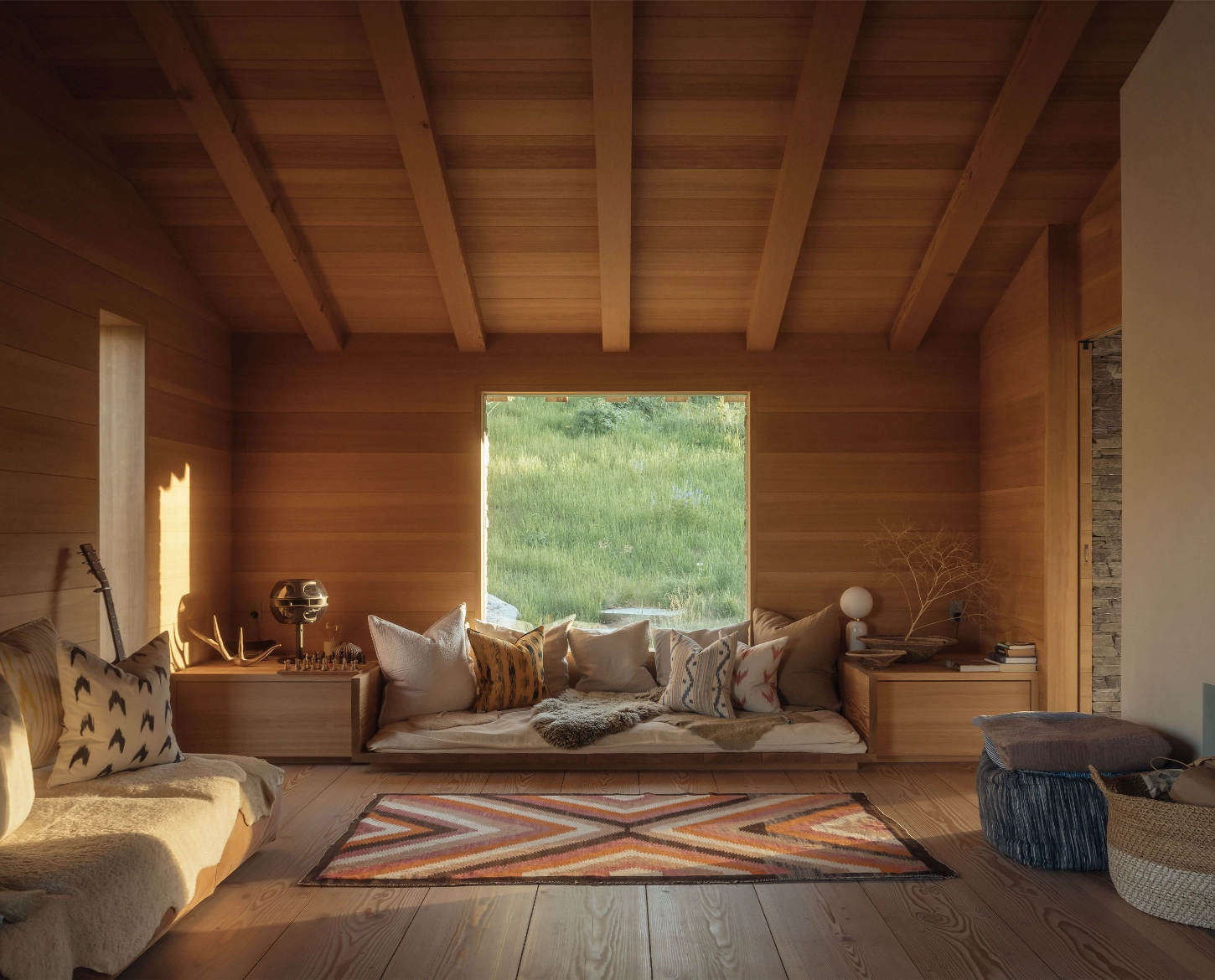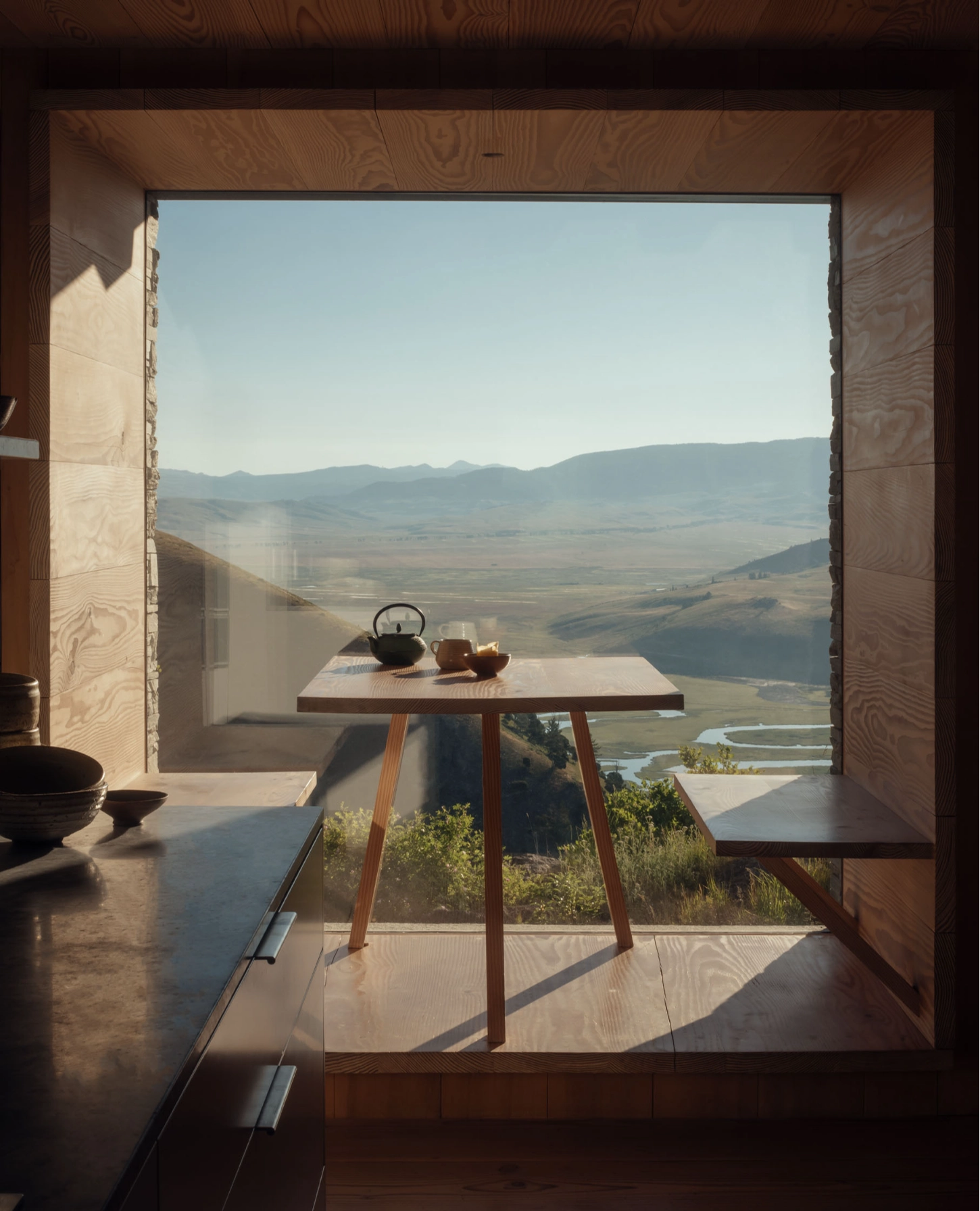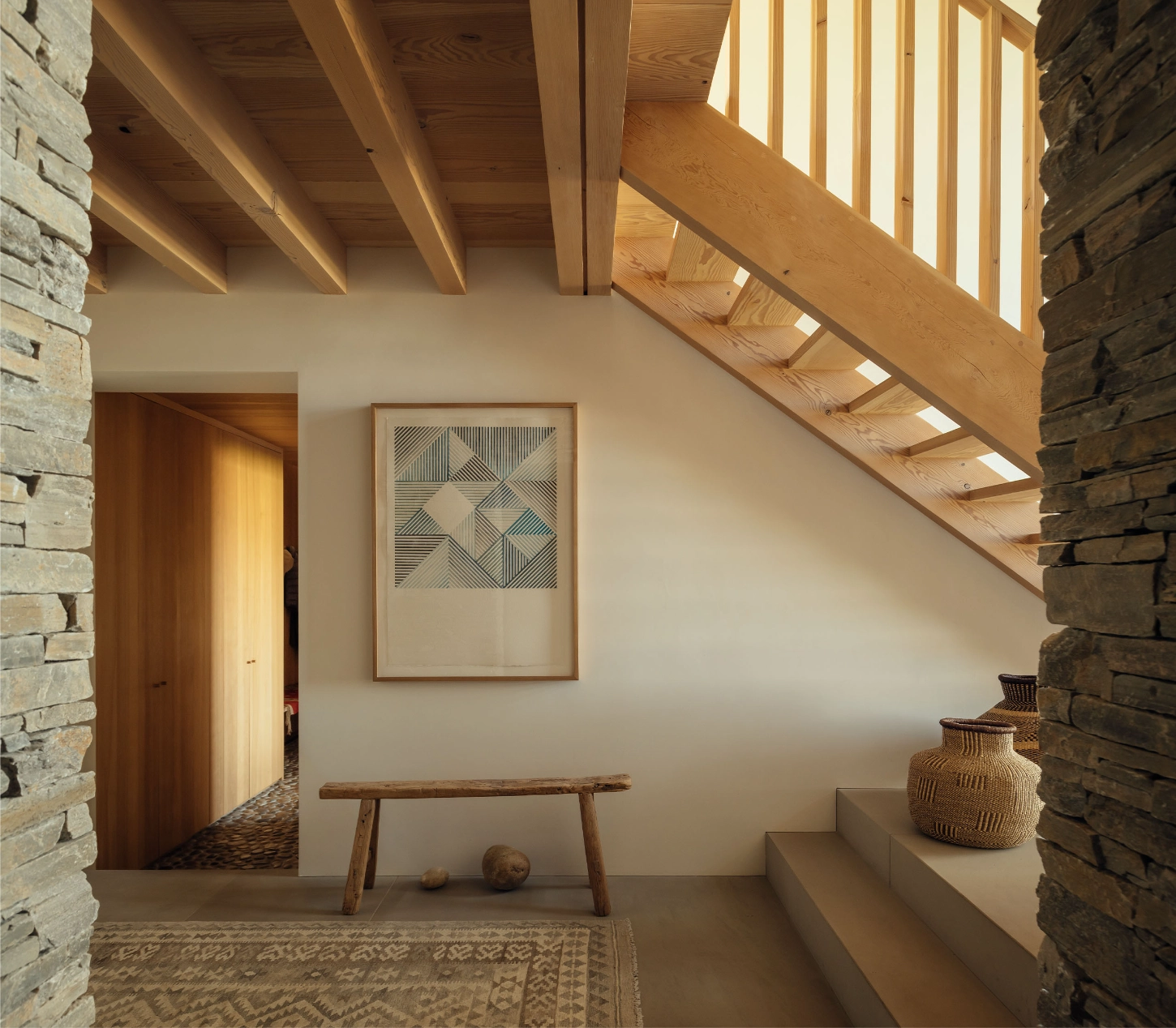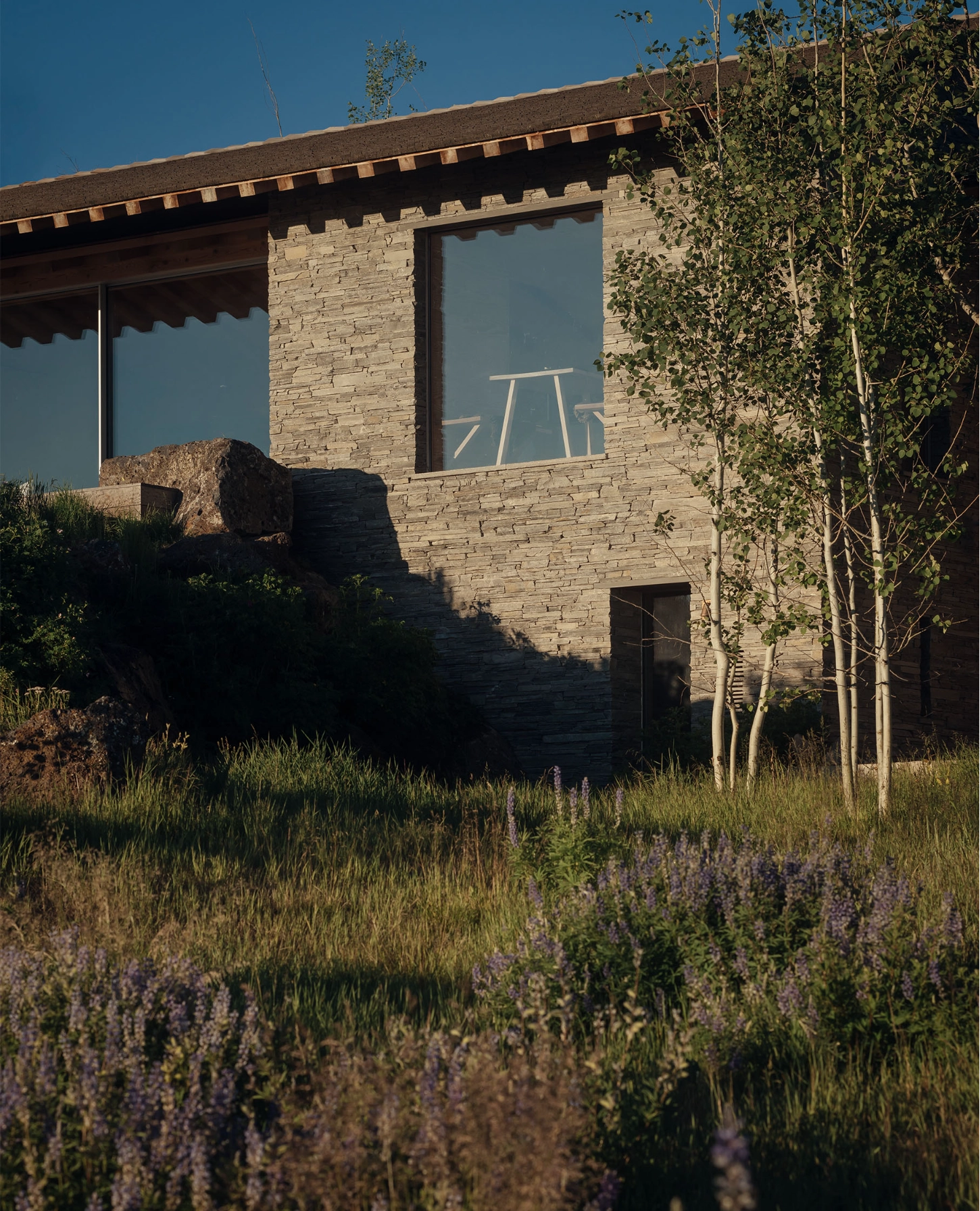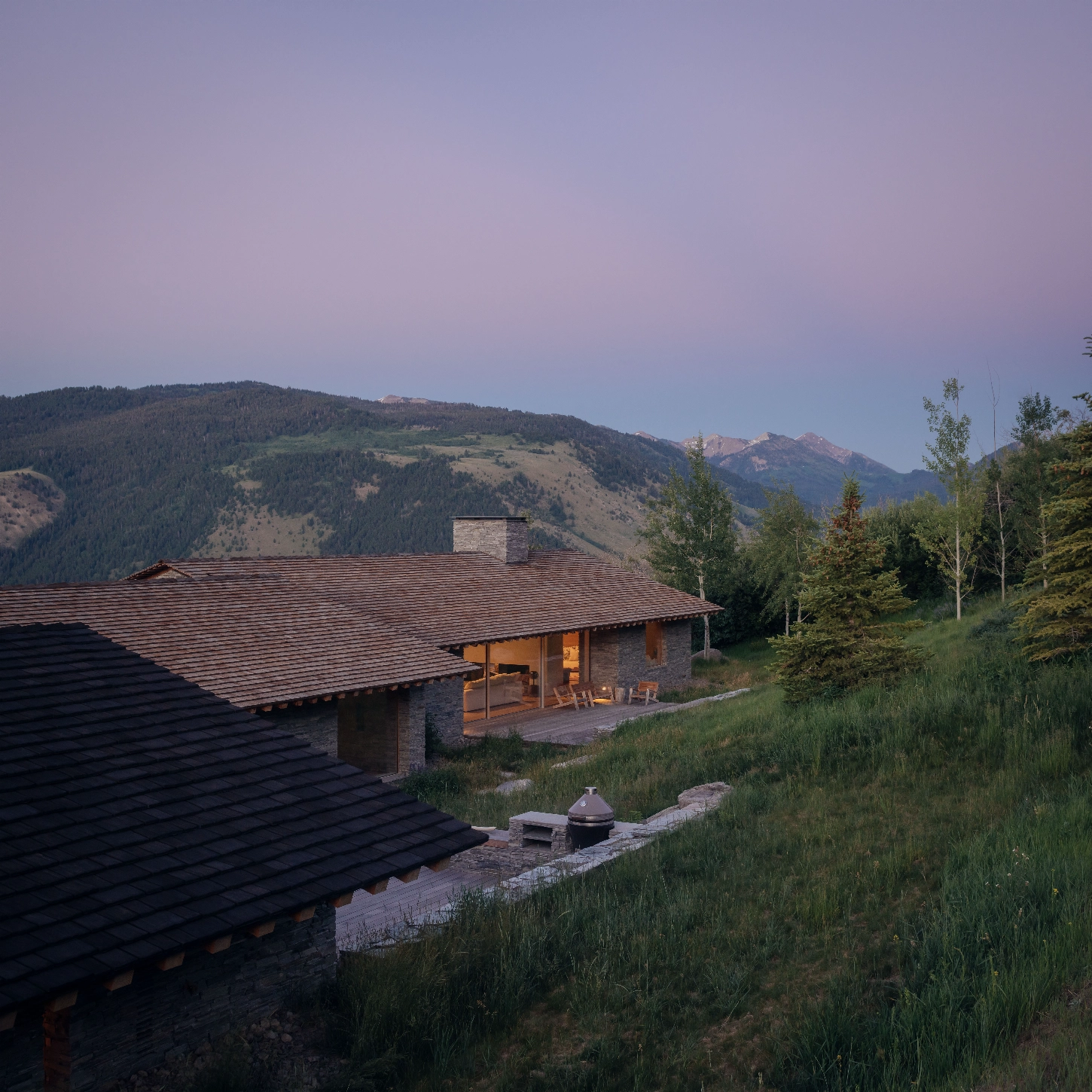Jackson Hole by McLean Quinlan is a house defined by restraint, quiet materiality, and a deep respect for its surroundings.
Set high above the town of Jackson, Wyoming, the home looks out toward the vast horizon and snow-dusted peaks of Grand Teton National Park, finding its place on the edge between wilderness and shelter.
Completed in 2016 and expanded eight years later, the project grew from a shared vision between the architects and the clients — both designers themselves. Rather than imposing on the land, the house was conceived to settle into it: a home that listens to the landscape rather than speaks over it.
The design draws from the warmth of the European chalet and the understated character of the American cabin. A minimal palette of stone, timber, plaster, and glass anchors the architecture in its alpine setting. These surfaces are meant to soften and weather, allowing the house to evolve over time and deepen its connection to the terrain. Orientation was carefully considered to catch light, frame distant peaks, and follow the contours of the slope.
Eight years on, the house has quietly grown. A guesthouse now sits slightly apart, linked through a discreet lower level that introduces a garage, boot room, and gym arranged around a calm, sunlit courtyard. The original garage has been transformed into two additional bedrooms, each detailed with the same precision and warmth as the rest of the home. The new interventions preserve the architecture’s quiet rhythm, blending into the existing structure as if they had always been there.
Inside, the spaces oscillate between openness and intimacy. The upper floors are bright and expansive, oriented toward the vast horizon. The lower levels, embedded into the landscape, are more introspective — sheltered, tactile, and warm. When the glass walls slide open, mountain air drifts through the timber-lined rooms, carrying with it the scent of pine and the quiet sounds of the surrounding wilderness.


